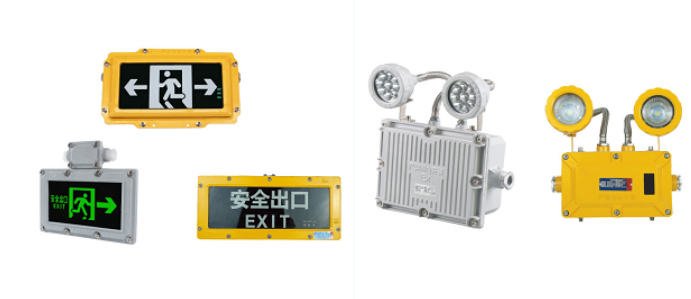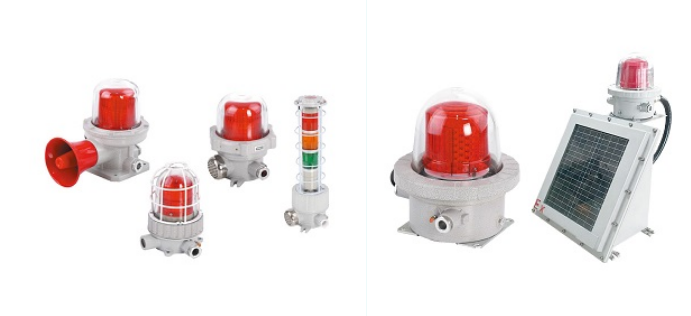Whether you are studying, designing or installing equipment in your daily life, electrical energy always plays an important role. However, this energy can also become a major threat in your life when it is used in any storage, processing and manufacturing factories or warehouses of the following products. These products include hydrocarbons, gases, paints, varnishes, glues, resins, spices, powders, fine particles, and dust particles from different environments. Therefore, the equipment and environment are highly likely to cause explosions, with unimaginable consequences. We are talking about a major threat in explosive hazardous areas.

The principle of explosion-proof lamps mainly lies in preventing explosions by stopping electric sparks, electric arcs or hot spots from causing explosions. The principle includes the following aspects:
1. Preventing the formation of electric sparks and electric arcs: Explosion-proof lamps are specially designed and assembled inside to avoid the generation of high-energy electric sparks and electric arcs in the circuit. For example, flame-retardant materials are used as the lamp housing, cables and connectors to prevent the spread of electric sparks.
2. Controlling voltage and current: The power supply part of explosion-proof lamps is specially designed and uses circuit protection measures such as current limiting and isolation to control the voltage and current of the lamps and reduce the risk of explosion.
3. Using explosion-proof materials: Special materials with explosion-proof performance are used in the selection of key components such as bulbs, glass and reflectors of explosion-proof lamps to reduce the possibility of explosion.
4. Improving heat dissipation effect: Explosion-proof lamps usually adopt heat dissipation structure design to effectively reduce the temperature inside the lamps and prevent explosions caused by overheating. In summary, the principle of explosion-proof lamps is to adopt a series of measures to limit the generation and spread of electric sparks, electric arcs and hot spots to avoid explosions caused by these factors.
Types of explosion-proof lamps
Explosion-proof lighting lamps: mainly used for lighting in flammable and explosive places, including explosion-proof fluorescent lamps, explosion-proof floodlights, explosion-proof spotlights, explosion-proof induction lamps, explosion-proof flameproof lamps, explosion-proof LED lamps, explosion-proof platform lamps, explosion-proof street lamps, etc.
Explosion-proof emergency lamps: mainly used for emergency lighting in flammable and explosive places, including explosion-proof sign lamps, explosion-proof emergency lighting lamps, etc.
Explosion-proof signal lamps: mainly used for command signals in flammable and explosive places, including explosion-proof sound and light alarm lamps, explosion-proof aviation signal lamps, etc.
Explosion-proof and corrosion-resistant lamps: mainly used in flammable, explosive and corrosive places, including increased safety type explosion-proof and corrosion-resistant lamps, stainless steel explosion-proof and corrosion-resistant lamps, etc.
Precautions
Explosion-proof lamps should automatically cut off power before the lampshade is opened. However, due to the complexity of setting up interlock devices and the difficulty in implementation, most lamps only have warning signs such as “Do not open with power on” at obvious places on the casing. Also, since the surface temperature of the bulb remains high even after power is cut off, there is still a risk of igniting explosive gas mixtures if the lampshade is opened immediately (mainly referring to flameproof structure). Therefore, for lamps with high surface temperature bulbs such as incandescent lamps, high-pressure mercury lamps, and high-pressure sodium lamps, and lamps that can be opened quickly, this point should be noted. When replacing bulbs (tubes), the flameproof joint surface of explosion-proof lamps should be properly protected and not damaged; after cleaning, the flameproof surface should be coated with phosphating paste or 204-1 anti-rust oil, and it is strictly forbidden to apply other paints; there should be no rust layer on the flameproof surface. If there is a slight rust, after cleaning, there should be no pitting phenomenon. The sealing ring used for dust-proof and water-proof purposes must be ensured to be intact. This is particularly important for increased safety type lamps. If the sealing ring is severely damaged, it should be replaced with a sealing ring of the same specification and material. If necessary, the entire lamp should be replaced. During maintenance, it is necessary to check whether the lampshade is intact. If there is any crack, it should be replaced immediately.




